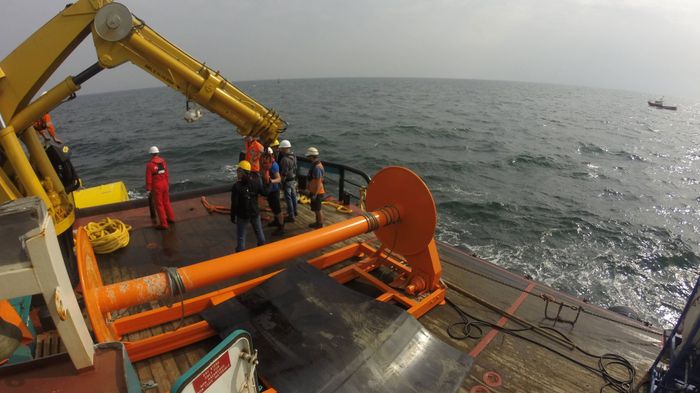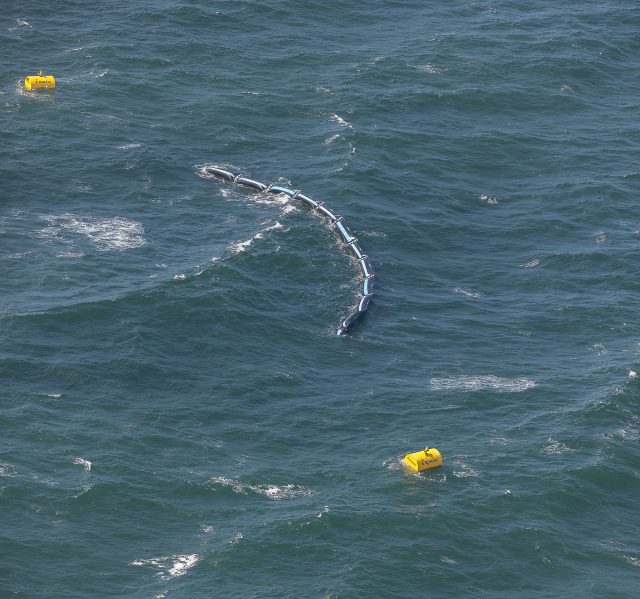
An update from the North Sea
Back to updatesDuring a recent inspection of the North Sea prototype, we noticed something unusual: the two outermost air chambers seemed to be bent out of shape – they did not follow the gentle U-shape of the boom.
Thanks to underwater footage we were quickly able to diagnose the problem. It turns out the problem was caused by failing shackles – the ones connecting the barrier to the permanent mooring system.
After our diagnosis, we continued to closely observe the situation for some time, monitoring the status of the prototype while continuing to execute plastic capturing tests during the quieter periods in between the storms.

After close to two months, having been subjected to large waves and winds of up to 45 knots (9 Bft – Strong Gale), we noticed the barrier suffered increased damages, and we hence decided to disconnect and take the barrier back to shore for detailed inspection and maintenance.
We understand why the damage occurred, and more importantly, we know how to fix it. Based on the lessons we learned from these first two months of testing we will now implement several design improvements to the boom, before reinstalling it at our North Sea test site in the near future. We will continue to go through these iteration cycles until we are confident the barrier design is capable of lasting in the Great Pacific Garbage Patch for years.
Nonetheless, during the heavy weather in mid-July and early August, the prototype was already exposed to forces greater that what we would face during a once-in-a-100-year storm in the Pacific Ocean, and the boom came out of it in reasonably good condition. Hence we are confident multi-year survivability is an achievable design goal.
We’d like to thank ActaMarine and The Ocean Cleanup prototype team for their swift response and the successful de-installation of the boom.
All this is of course an excellent example of why we are testing a prototype. Making modifications on a small scale structure that is 10 miles offshore is relatively easy. In contrast, making this correction on a large scale structure 1000 miles offshore would have been an entirely different challenge – at a different cost.
When ideas are confronted with reality, there will always be surprises. By coming across this issue now, we tackled one more thing before deployment of the pilot system next year. I cannot wait to see what else we will discover once the testing resumes.
